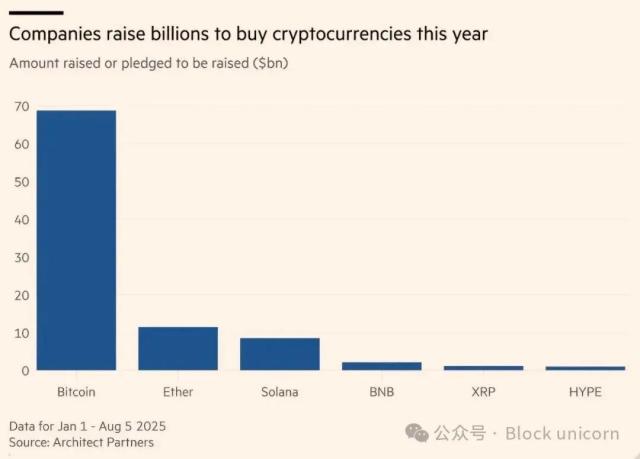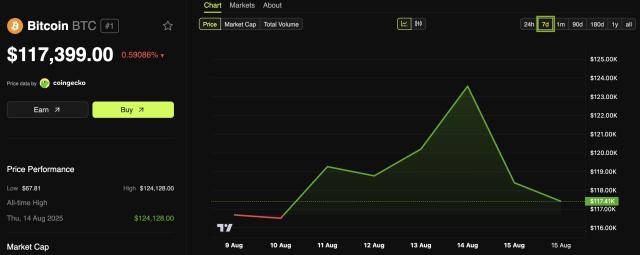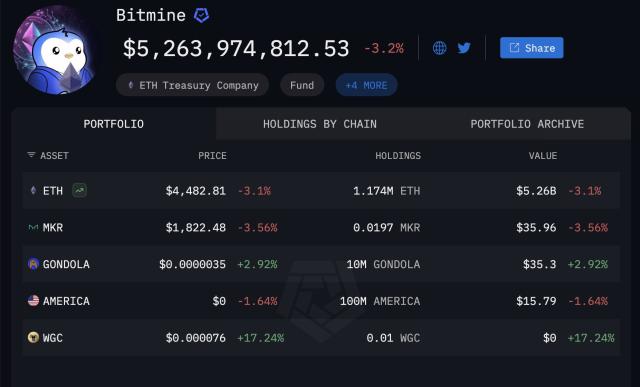Original Title: Why Cathie Wood's ARK Invest Modified Its $1.5M Target | CoinDesk Spotlight
Guest: Cathie Wood, ARK Invest CEO and CIO
Podcast Date: August 12, 2025
Organized & Compiled by: LenaXin, ChainCatcher
ChainCatcher Editor's Summary:
This article is compiled from a focus interview podcast by Coindesk with Ark Invest CEO and CIO Cathie Wood, where she elaborates on how the rapid proliferation of stablecoins affects her famous prediction of Bitcoin at $1.5 million, discusses her personal journey in economic research and unique investment philosophy, and reveals ARK Invest's crypto asset allocation methodology, transparency strategy operation logic, and regulatory challenges.
Compiled and translated by ChainCatcher.
(The rest of the translation follows the same professional and precise approach, maintaining the original structure and specific terminology as instructed.)Cathie Wood:Regulatory shifts are reshaping the innovation landscape. Moving from the Gensler era's "enforcement regulation" to a legislative-guided friendly framework is accelerating the rise of "proxy AI": Future AI assistants will make autonomous decisions and collaborate, requiring smart contracts as underlying support. When AI agents automatically settle with media platforms, the fusion value of blockchain and AI becomes prominent.
As regulations break through, traditional institutions are massively deploying blockchain, which can not only compress payment costs from3.5%to1%(When global asset management scale reaches250trillion dollars in five years, a2%cost saving means huge efficiency improvement), but will also give birth to a micro-payment network driven by proxy AI. These innovations constitute a "digital infrastructure" that is becoming the core engine of the next productivity revolution, which is the strategic fulcrum of the crypto economy in the new cycle.
CoinDesk: Do you view Ethereum as the base layer for building an efficient proxy AI ecosystem?
Cathie Wood: We continuously track the protocol selection logic of institutional digital asset deployments. Although Solana's market performance is more eye-catching, institutions like Coinbase and Robinhood still choose Ethereum as the Layer 2 underlying layer. This confirms our judgment that "Ethereum will become an institutional-level protocol". This stems from its more decentralized architecture's security advantages, although transaction efficiency is not as good as Solana.
The "bad income" clause in the 1940 Investment Company Act restricts funds from gaining exposure through ETFs, where profits exceeding 10% of a single investment might lose tax benefits.
Now we break through this limitation to establish an Ethereum position, whose value is not just in asset reserves. As an early investor in Circle, we observe that the Ethereum network is becoming the primary carrier of stablecoin explosion, and future staking returns will further enhance its utility. This is in sharp contrast to MicroStrategy's strategy of simply hoarding Bitcoin.
(The translation continues in the same manner for the rest of the text, maintaining the specified translations for specific terms and preserving the original formatting.)Cathie Wood:What truly keeps us awake at night is the disastrous regulatory direction in the United States over the past four years. We have even started seriously considering shifting more research overseas. Especially in the blockchain field, the innovative vitality of the United States is being completely stifled. It's important to know that blockchain represents the next generation of internet revolution, just like how the internet once led America's technological revolution, yet we are actively giving up this even larger technological iteration.
From an investment perspective, markets like Europe have regulatory fragmentation and geopolitical risks.We once publicly called SEC Chairman Gensler a "threat to innovation" during a livestream, and then realized that we are an institution regulated by the SEC. This statement indeed carries commercial risks, but when it threatens the foundation of American tech companies, we must stand up and speak out.
CoinDesk: Why choose to publicly share transaction information on social media? What strategic significance does this information transparency have for your business?
Cathie Wood:After the 2008 financial crisis, we observed a trend of mutual funds being replaced by ETFs. As an active investor, I had an idea: to incorporate active strategies into the ETF framework. This innovation not only made ETF fees more transparent and reduced investment costs but also responded to the market's post-crisis thirst for transparency.
While peers either turned to passive investment or chased the "six tech giants" leading to investment homogeneity, we focused on innovative fields. Although this strategy was overlooked during the 2021-2024 tech stock bull market, this year's market expansion has validated our judgment.
Our practice of sharing research reports and trading records for free during the pandemic unexpectedly went viral in Asia, shaping a global brand. With an economics background, I predicted in March 2020 that massive stimulus policies + savings rate soaring to 27% would cause economic overheating. This judgment was ultimately proven correct, but the subsequent interest rate storm severely impacted non-giant innovative companies.
CoinDesk: Were you ever worried that AI might surpass ARK's investment capabilities?
Cathie Wood:Currently, AI is most likely to make breakthroughs in passive investment and benchmark-sensitive strategies. This is precisely the area many investors turned to when the "six US tech giants" dominated. In contrast, I'm more wary of benchmark-sensitive or quantitative strategies, those models relying on factor analysis (traditional indicators like growth, cash flow quality, volatility, profitability).
When quantitative analysts study our strategies, they find numerous "residuals" that cannot be explained by existing factors. This is because the future won't simply repeat history, and we precisely invest in the future. Quantitative models are essentially based on historical data retrospection, which is exactly our advantage.
I believe AI will soon disrupt traditional quantitative strategies, completely commoditizing them.But our strategy relies on original research, which can be fed to large language models like OpenAI and Grok. While AI can identify certain pattern recognitions, this will actually enhance our research efficiency. For instance, in our core "Wright's Law" analysis work, AI will significantly reduce our burden on such time-consuming research.
(Note: Wright's Law is a sister law to Moore's Law, indicating that as production doubles, costs decrease at a fixed ratio)
But I absolutely do not underestimate the value of human wisdom, especially the creativity of our research team. The synergy between AI and human researchers will push our investment capabilities to new heights.
(Seven)Dialogue with "Little Cathie"
CoinDesk: If you could go back in time and talk to your 20-year-old self exploring various possibilities, what would you tell her?
Cathie Wood:I would appreciate her open and inclusive attitude. That period of exploration was indeed enjoyable, and college is the best stage for trying various possibilities.
Dedicating yourself to a field you love can bring lasting satisfaction. The innovative seeds I planted in the first twenty years of my career have now blossomed and borne fruit.
Looking back at the internet bubble of the late 90s, IPOs that soared fourfold on the first day highlighted market frenzy. Take gene sequencing as an example: in 2003, a single test cost $2.7 billion, and now it's only $200. The contrast between technological maturity and market performance precisely confirms collective irrationality.
The current market presents a healthy situation, and in an atmosphere of general caution, frontier fields like AI healthcare are steadily developing. Meanwhile, investment opportunities are spreading from tech giants to emerging assets like blockchain, which is entirely in line with expectations.






